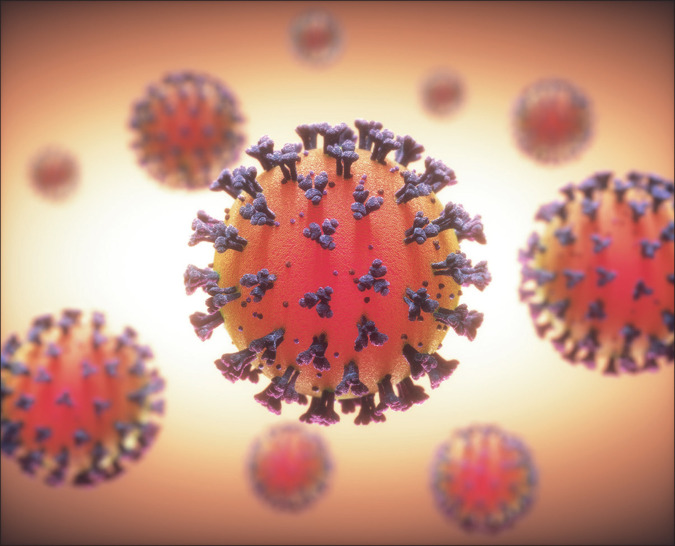We read the Article by Sanjay Ramakrishnan and colleagues in The Lancet Respiratory Medicine with great interest.1 The results of their phase 2 randomised clinical trial indicated that early treatment with inhaled budesonide in patients with COVID-19 might prevent clinical deterioration, as determined by a reduced number of urgent care visits.1 The rational for the use of inhaled corticosteroids in patients with COVID-19 was already discussed by Alvar Agusti and colleagues.2 However, we here highlight that the open-label study design and the subjective primary endpoint both introduce an unknown level of bias, making interpretation of data difficult.3
Ramakrishnan and colleagues1 acknowledge the limitation of the open-label design, but do not discuss that, without clear rules, the primary outcome of the trial (urgent care visit, including emergency department assessment or hospitalisation) is very subjective, mainly driven by the patient's own perception of their course of disease. Patients not receiving the experimental treatment, which was presented to them as potentially beneficial at the time of informed consent, are likely to expect more complications than those given the active treatment.
© 2021 KTSDesign / Science Photo Library
Based on the mode of action, an improvement in blood oxygen saturation with budesonide would be expected.4 This is the most objective endpoint for defining lung injury according to WHO;5 however, no pattern in favour of budesonide was observed (no difference in proportion of days with oxygen saturation ≤94%, nor in participants with at least 1 day of oxygen saturation ≤94%).1
The 11 participants who met the primary endpoint in the per-protocol group were defined by a mixture of very different medical events, namely three participants were symptomatically breathless, one developed diabetic ketoacidosis, one acute kidney injury, one suspected pulmonary embolism, and one suspected rib fracture. Four participants were seen at least twice by general practitioners or a paramedic crew, or both, of whom one was sent to the emergency department. Indeed, this one patient ultimately requiring ventilation was in the control group. However, diabetic ketoacidosis, acute kidney injury, suspected pulmonary embolism, or rib fractures hardly qualify as early COVID-19 complications. Furthermore, the fact that all three participants who were symptomatically breathless were in the control group, underlines the potential for self-assessment based bias, because no difference in oxygen saturation between the two groups could be found.
To us the main message from this Article is that budesonide was well tolerated without major side-effects or increased viral load, supporting further assessment in double-blind studies. Widespread use of a treatment with overestimated efficacy might lead to wrong decisions and risk perception in society and in individual patients.
We declare no competing interests.
References
- 1.Ramakrishnan S, Nicolau DV, Jr, Langford B, et al. Inhaled budesonide in the treatment of early COVID-19 (STOIC): a phase 2, open-label, randomised controlled trial. Lancet Respir Med. 2021 doi: 10.1016/S2213-2600(21)00160-0. published online April 9. [DOI] [PMC free article] [PubMed] [Google Scholar]
- 2.Agusti A, Torres F, Faner R. Early treatment with inhaled budesonide to prevent clinical deterioration in patients with COVID-19. Lancet Respir Med. 2021 doi: 10.1016/S2213-2600(21)00171-5. published online April 9. [DOI] [PMC free article] [PubMed] [Google Scholar]
- 3.Schulz KF, Grimes DA. Blinding in randomised trials: hiding who got what. Lancet. 2002;359:696–700. doi: 10.1016/S0140-6736(02)07816-9. [DOI] [PubMed] [Google Scholar]
- 4.Festic E, Carr GE, Cartin-Ceba R, et al. Randomized clinical trial of a combination of an inhaled corticosteroid and beta agonist in patients at risk of developing the acute respiratory distress syndrome. Crit Care Med. 2017;45:798–805. doi: 10.1097/CCM.0000000000002284. [DOI] [PMC free article] [PubMed] [Google Scholar]
- 5.Marshall JC, Murthy S, Diaz J, et al. A minimal common outcome measure set for COVID-19 clinical research. Lancet Infect Dis. 2020;20:e192–e197. doi: 10.1016/S1473-3099(20)30483-7. [DOI] [PMC free article] [PubMed] [Google Scholar]



